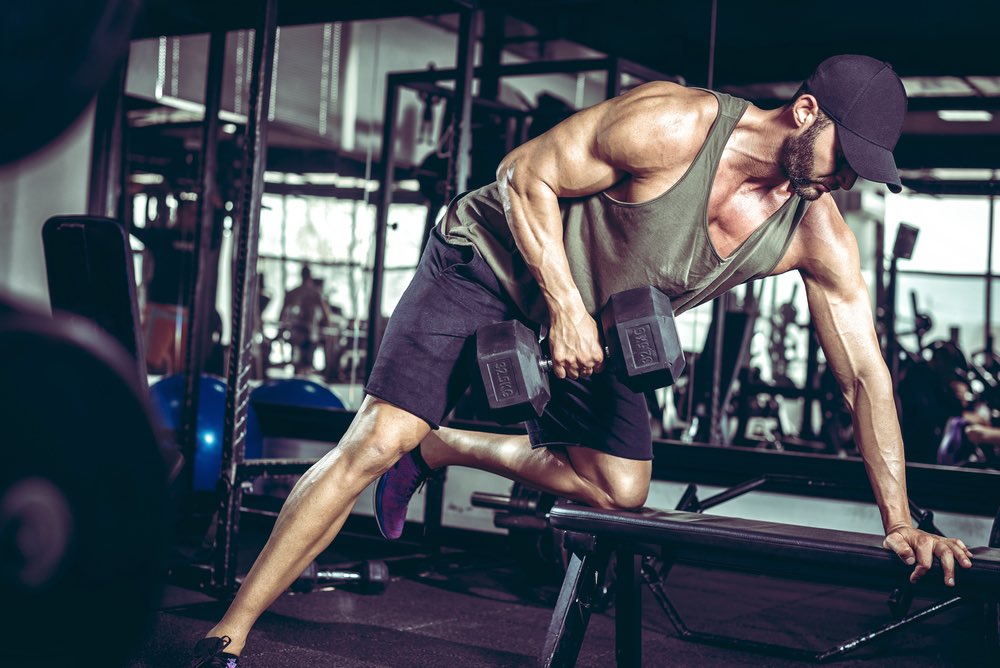Build a big, strong and broad back with the Meadows row
Want to build a bigger, stronger and more defined back? There’s few better moves than the Meadows row, named after legendary bodybuilder John “Mountain Dog” Meadows. Not many people outside of elite training circles have ever heard of his eponymous exercise, but those that have tried it swear it builds the big, broad and impressive back that shows you know your way around the weights room, says New Body Plan’s Joe Warner
To build bigger and stronger muscles you need to go back to basics. But in the case of the Meadows row, basic doesn’t mean easy. Named after John Meadows, a professional bodybuilder and world-renowned fitness coach, this single-arm row variation targets your back muscles with laser-like precision, while also working your biceps, shoulders, and core. Read on to discover the mechanics, benefits, and nuances of the Meadows row so you can start sculpting the lean, defined and athletic upper body you want!
TL;DR The Meadows row is a potent single-limb, upper-body exercise that targets your back, arms, and core. It’s unique in its use of a barbell tucked into a corner, offering a different angle and load distribution to traditional rows variations, such as the pull-up, the barbell bent-over row, the machine lat pulldown or the cable seated row.
Find your perfect fat-loss plan!
Take the New Body quiz!
What is the Meadows row?
The Meadows row hits your lats, traps, rhomboids, and teres major, promoting balanced upper-body development. Simultaneously, it works your biceps, brachialis, and brachioradialis, along with your core and grip strength. It offers a different stimulus to traditional rows due to the angle of the pull and the asymmetrical load, adding variety to your workout and challenging your muscles in new ways.
Use cable machines to build muscle and burn fat to build a better body
How is the Meadows row different from other rowing exercises?
While traditional rowing exercises usually involve pulling weight towards your torso along a predictable path, the Meadows row’s unique setup – a landmine-style arrangement with a barbell tucked into a corner – creates a distinct arc of movement. This allows for a fuller contraction of the muscles at the top of the movement. You’ll feel the difference, especially in your lats. Get ready to embrace the burn!
What other exercises are similar to the Meadows row?
Similar exercises include the T-bar row and single-arm dumbbell row. The T-bar row uses a similar landmine setup, but you row with both arms, altering the stimulus and load distribution. The single-arm dumbbell row is similar in its one-sided approach, but it doesn’t involve the distinct arc of the Meadows row. As stated in the Journal of Strength and Conditioning Research: “Unilateral exercises may prove to be an effective means to elicit improvements in both unilateral and bilateral strength.”
Can beginners do the Meadows row?
Yes, but it’s important to start light and master the form first. The Meadows row can be a little tricky due to the barbell’s arc of movement, but with patience and practice, beginners can reap its benefits. Check our out expert form guide below, but if you’re still not sure just ask one of your gym’s personal trainers.
Does the Meadows row offer any specific advantages for athletes?
The Meadows row can be particularly useful for athletes involved in sports that require strong pulling action or rotational power, such as rowing, martial arts, or tennis. The exercise’s unilateral nature can help address strength imbalances and improve stability. “Unilateral resistance training can provide stimulus for strength and balance,” according to a study in the Journal of Human Kinetics.
How to do the Meadows row
- Position a barbell in a corner or landmine device.
- Stand perpendicular to the barbell, feet hip-width apart.
- Bend at your hips and knees, back straight, and grasp the barbell sleeve with one hand.
- Keep your torso almost parallel to the floor.
- Pull the barbell towards your chest, keeping your elbow close to your body.
- Lower the barbell along the same path, extending your arm fully.
- Do the target number of reps with one arm, then switch sides and immediately do the same number of reps with the other arm. Rest then repeat for the target number of sets.
Regression move to the Meadows row
Make it easier: Perform the exercise with a lighter weight or use a kettlebell instead of a barbell for better control.
Progression exercise to the Meadows row
Make it harder: Add resistance bands to the barbell for increased tension at the top of the movement.
Find your perfect fat-loss plan!
Take the New Body quiz!
Burn fat and lose your belly with the best cardio for weight loss
Boost serotonin quickly and naturally to look and feel great

